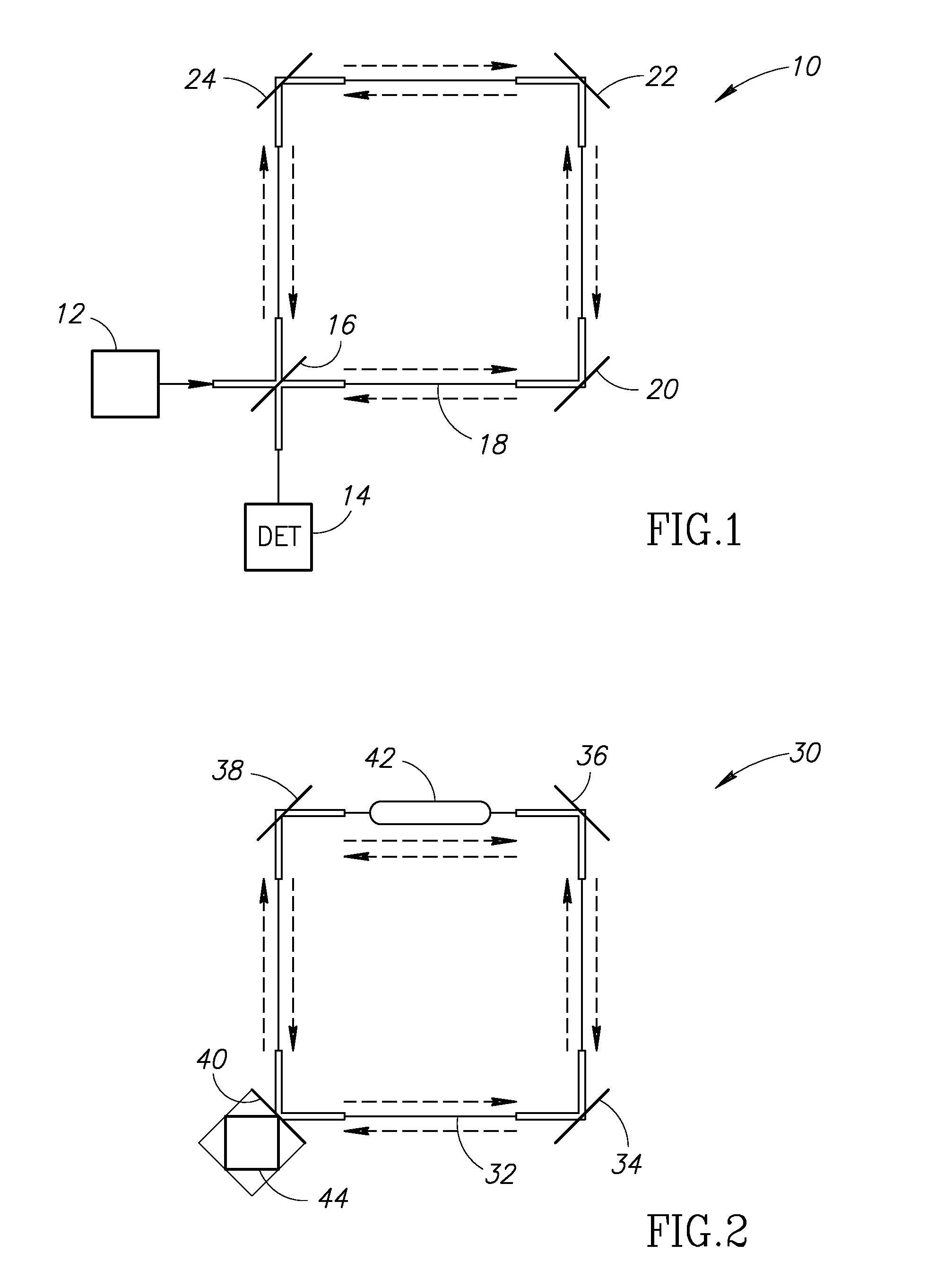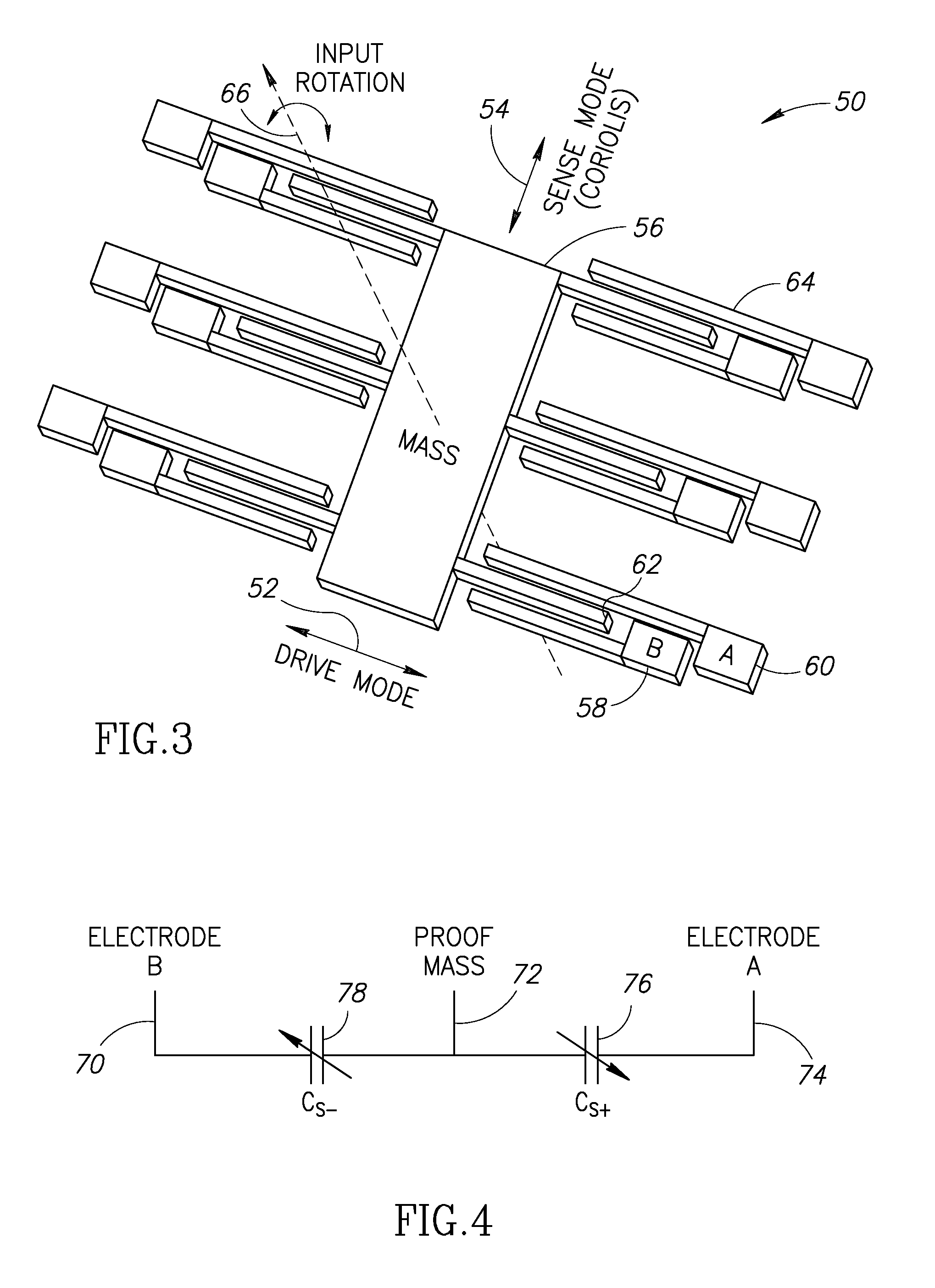Sagnac effect based radio frequency electronic gyroscope incorporated in CMOS integrated circuit
a radio frequency electronic and gyroscope technology, applied in the field of gyroscopy, can solve problems such as phase difference between the two
- Summary
- Abstract
- Description
- Claims
- Application Information
AI Technical Summary
Benefits of technology
Problems solved by technology
Method used
Image
Examples
first embodiment
[0095]A time domain voltage waveform plot of the system operating in accordance with the method of the present invention where it operates in discontinuous phase mode without a guard interval is shown in FIG. 10. Trace 250 shows the voltage of the RF signal propagating in the CW direction, while trace 252 shows the waveform of the RF signal propagating in the CCW direction. Trace 260 shows the DIR signal controlling the system to alternate between CW and CCW directions using the switch matrix in the system, as was explained supra. As can be seen in the figure, the instances for which direction reversal is triggered are 254, 256, 258, etc., spaced apart by ΔT. This duration is chosen long enough such that when the system is amplifying the RF signal in the CW direction (e.g., between time stamps 254 and 256), the CCW direction voltage decays completely. When the system is amplifying the RF signal in the CCW direction (e.g., between time stamps 256 and 258), the voltage in the CW direc...
second embodiment
[0096]A time domain voltage waveform plot of the system operating in accordance with the method of the present invention where it operates in continuous phase mode without a guard interval is shown in FIG. 11. Trace 270 shows the voltage of the RF signal propagating in the CW direction, while trace 272 shows the waveform in the CCW direction. Trace 280 depicts the DIR signal controlling the system to alternate between CW and CCW directions. As can be seen the figure, the instances for which direction reversal is triggered are 274, 276, 278, etc., spaced by ΔT each. This duration is chosen short enough such that when the system is amplifying in the CW direction (e.g., between time stamps 274 and 276 the signal propagating in the CCW direction does not completely decay before being amplified again at timestamp 276. When the system is amplifying the signal propagating in the CCW direction (e.g., between time stamps 276 and 278), the signal propagating in the CW direction does not compl...
third embodiment
[0097]A time domain voltage waveform plot of the system operating in accordance with the method of the present invention where it operates in discontinuous phase mode with a guard interval is shown in FIG. 12. Trace 290 shows the time domain voltage waveform of the RF signal propagating in the CW direction, whereas trace 292 shows the time domain voltage waveform of the RF signal propagating in the CCW direction. Trace 312 shows the DIR control signal, which is used to alternate between amplification in the CW and CCW directions, as explained supra. Trace 314 shows the GUARD control signal, which serves to interrupt the operation of the loop at twice the frequency of the DIR signal. For example, between time stamps 296 and 298 the GUARD signal is LOW, allowing for the RF signal to propagate in the loop. The direction control signal DIR is set to HIGH for this interval and hence trace 290 shows the CW waveform building up and oscillating at full span. In contrast, between time stamps...
PUM
 Login to View More
Login to View More Abstract
Description
Claims
Application Information
 Login to View More
Login to View More - R&D
- Intellectual Property
- Life Sciences
- Materials
- Tech Scout
- Unparalleled Data Quality
- Higher Quality Content
- 60% Fewer Hallucinations
Browse by: Latest US Patents, China's latest patents, Technical Efficacy Thesaurus, Application Domain, Technology Topic, Popular Technical Reports.
© 2025 PatSnap. All rights reserved.Legal|Privacy policy|Modern Slavery Act Transparency Statement|Sitemap|About US| Contact US: help@patsnap.com



